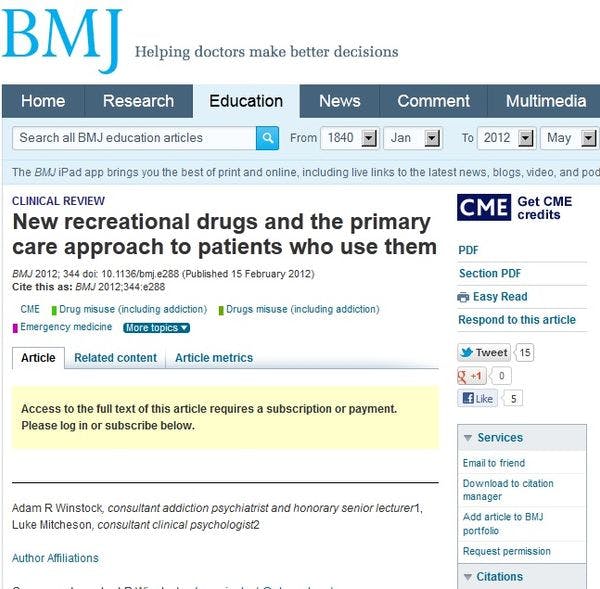New recreational drugs and the primary care approach to patients who use them
British Medical Journal (2012)
In recent years, hundreds of new drugs have appeared on the recreational drugs market in Europe. Some of these substances, such as ketamine and γ-hydroxybutyrate (GHB), have legitimate medical purposes. These compounds have been joined by many novel psychoactive substances that, combined with their online marketing, pose a challenge for policy makers and health providers.
The origins of these new drugs vary from synthetic compounds (such as 4-methylmethcathinone, or mephedrone) to traditional herbal products (such as salvia divinorum and kratom). The synthetic compounds are often designed and promoted to avoid contravening drug, medicine, and consumer protection laws. Although mephedrone, other cathinones, and various other synthetic compounds (including several cannabinoids) were classified in the United Kingdom as class B drugs in April 2010, many other new substances with psychoactive potential remain legally available. Rapid changes in legislation, combined with diverse branding and poor quality control, have led to a marked variation in the composition of these products, making it difficult for users and clinicians to identify exactly what is being consumed.
This article reviews some common examples of these new drugs, and provides a framework for conducting an interview in the primary care setting with people who may have problems with their use.
To view the article (with limited access) please click here.
Keep up-to-date with drug policy developments by subscribing to the IDPC Monthly Alert.
